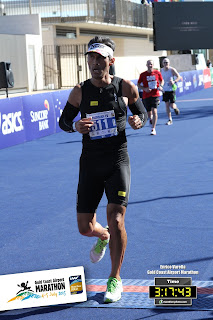I earned my second Boston Marathon slot two Fridays ago.
It came as a surprise as I did not expect to get confirmation so soon. I registered on Wednesday, on the second-tier (more than 10 minutes faster than my BQ) of submission of my entry.
I look forward to racing on Patriot's Day next year. I aim to earn a BQ there, as several of my friends have done for years.
It came as a surprise as I did not expect to get confirmation so soon. I registered on Wednesday, on the second-tier (more than 10 minutes faster than my BQ) of submission of my entry.
I look forward to racing on Patriot's Day next year. I aim to earn a BQ there, as several of my friends have done for years.









